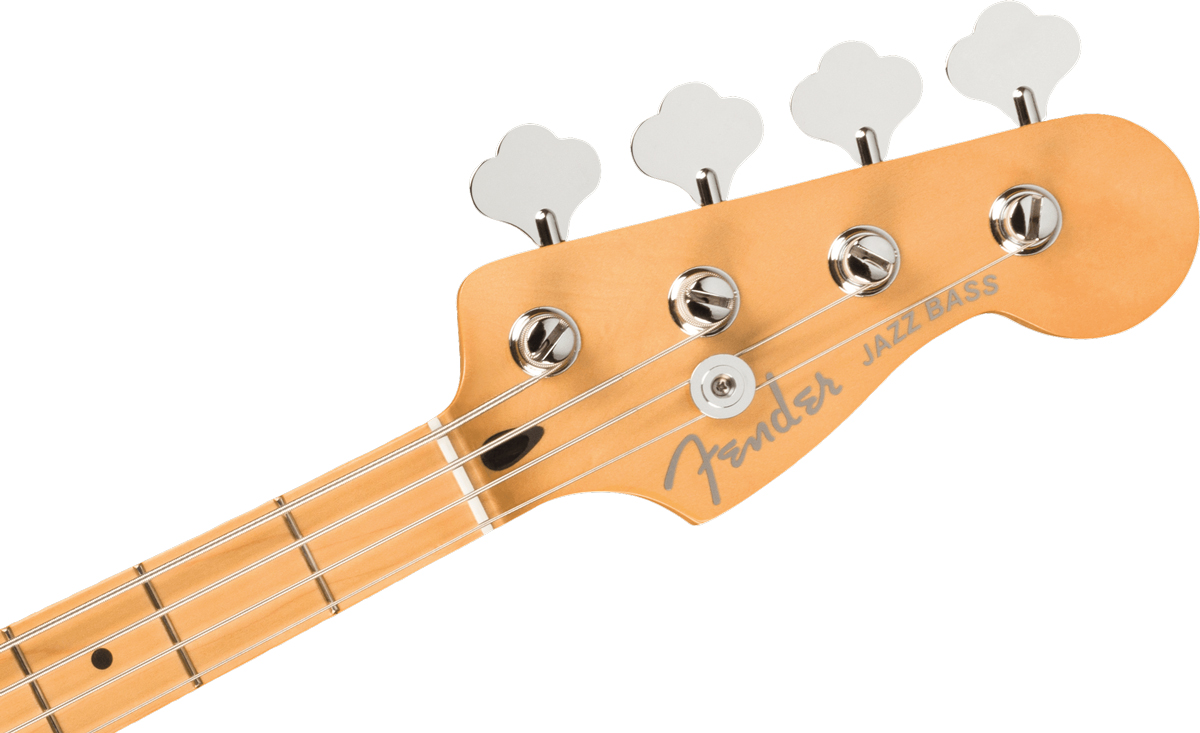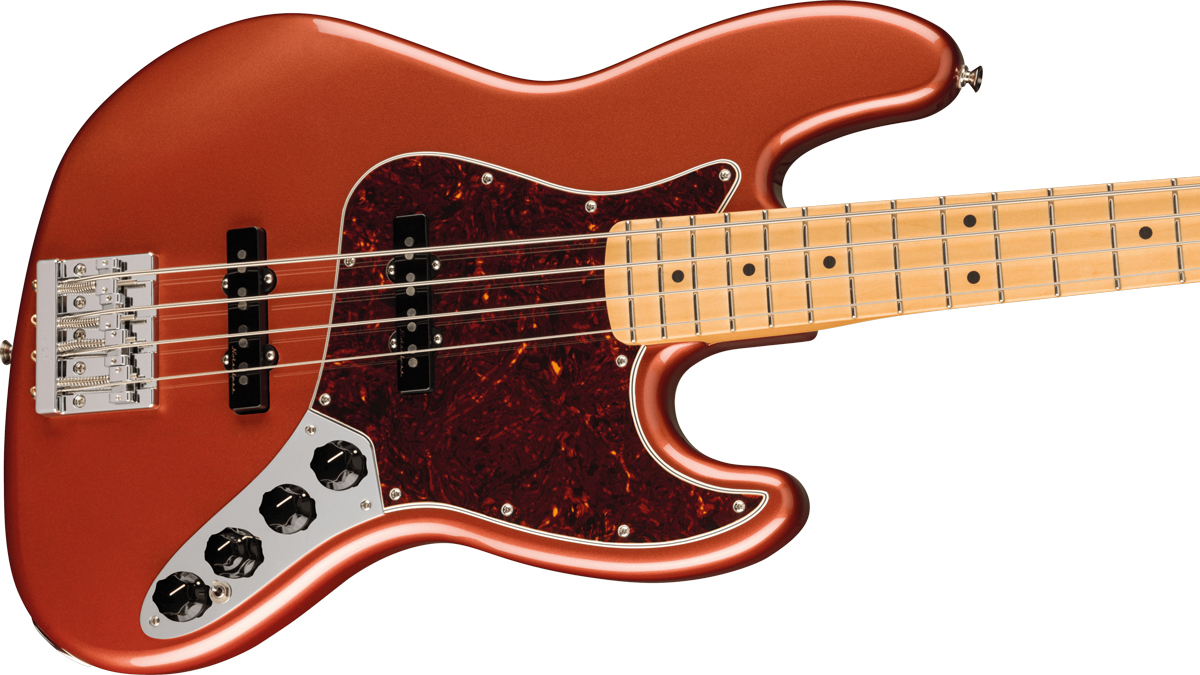Guitar World Verdict
A beautiful, amped-up Jazz Bass for contemporary players and discerning veterans alike.
Pros
- +
Neck dimensions are spot-on.
- +
Versatile tones.
- +
Build quality is difficult to fault.
Cons
- -
A tad heavy, and costly, for young bassists.
You can trust Guitar World
Fender doesn’t need to prove anything to us, now or ever. Any informed bass player understands the brand’s heritage and appreciates the value of a decent Precision or Jazz in his or her arsenal, even though great bass guitars are also made by many, many other manufacturers.
The question in 2022, over 70 years since the Big F started making basses, is how many more Fenders we really need. No fewer than 19 Precision and 26 Jazz variants are currently available, not to mention the much-loved Mustang and Jaguar basses, and that doesn’t include artist signature models.
Now, yet another new range of Ps and Js – the Player Plus basses – has appeared, as an expansion of the existing, affordable Player range from 2018. Of these, we’ve been sent the four-string Jazz for review – a Precision and a five-string J are also available. The goal of the original Player series was, we quote, “to set a new standard for what an entry-point Fender could be”, while the objective of the new made-in-Mexico basses is “to match the unique characteristics of today’s players and creators”.
The first goal has been successfully met: these instruments, while not exactly cheap, come in around a thousand dollars – a reasonable price for instruments of this quality and heritage. As for the second aim, of encouraging today’s young bassists to pick up a Fender, reinforced by the appearance of BP’s recent cover star Blu DeTiger in the publicity, let’s see if they’ve pulled it off.
Build Quality

Well, this certainly doesn’t feel like an entry-level bass. For starters, it weighs just under a whopping 10 pounds, and the quality and design of pretty much all the components is impressive. The hi-mass bridge gives the instrument solidity, and the rolled-off neck edges, which all basses will have after the revolution, give it a lustrous feel.
My personal test for build quality always starts with a quick poke at the pickups: if they’re attached immovably, as these are, I always feel reassured. The familiar tuners move slowly and steadily, the body finish is beautifully smooth and consistent, and the frets feel very smoothly navigable. The only slightly cut-price components are the plastic control pots, but you can’t have everything. As the great Ronnie Scott pointed out, where would you put it?
Sounds and Playability
We have 18 volts to play with, as per the two handy pop-out battery compartments; one day someone will invent a single 18-volt battery and save us a lot of time. This is good news, because when you plug in and start experimenting with the active EQ, it performs with great muscularity, boosting tones quickly and powerfully at the three expected points.
Controls are volume, pickup blend – a very useful feature; I much prefer it to separate pickup volumes – and the three-band EQ, toggled on and off by a microswitch. This is split, nostalgically, between an old-school stacked pot for bass and treble, and a single mids pot.
This configuration is highly appropriate in today’s era: whether you’re trying to be heard through a minuscule smartphone speaker, or attempting to cut through your guitarist’s obnoxious seven-string tuned down to A, a dedicated mids control is not only your friend, it’s a life-saver.
As for playability, do we even need to go there? The Fender Jazz is and always has been one of the most player-friendly bass designs on the planet, and this variant doesn’t let you down in that sense. Young and/or economically dimensioned bassists will love the neck and its 41.3mm nut width, and of course the 12”-radius fingerboard and modern C-shaped neck profile have always been popular for a simple reason: they make your fretting easy and fun.
Conclusion

Okay, we’ll buy it. If you’re making bass videos for YouTube or TikTok, your instrument needs plenty of mids and power, it needs to be reliable, it needs to look good, and would ideally be affordable. The last of these aside, the Player Plus Jazz Bass pulls off a perfect score.
We applaud the thinking that has gone into this range. To a great extent, this is a friendly bass for the young musician: the neck will suit small hands, and the electronics are perfect for today’s needs, whether studio or live. It’s a heavy instrument, though, and having seen a few athletic-but-slender kids struggle with a 10-pound bass, some reduction in mass might have been beneficial.
As for the cost, a thousand bucks is no small asking price, but much cheaper, equally cool basses exist for that very reason. They’re just not Fenders. So if the brand is important to you, and you need the beefed-up, glammed-up performance that these excellent Player Plus basses give you, consider the investment.
Specs
- PRICE: $1,099
- MADE IN: Mexico
- BODY: Alder
- NECK: Maple, 34” scale
- NECK JOIN: Bolt-on
- FINGERBOARD: Maple, 20 frets
- PICKUPS: 2x Player Plus Noiseless single‑coils
- CONTROLS: Volume, pickup blend, three-band active EQ (1x mids boost/cut pot, 1x stacked treble/bass boost/cut pot), active/passive toggle switch
- HARDWARE: Fender tuners, HiMass bridge
- FINISH: Olympic Pearl, 3-Color Sunburst, Belair Blue, Aged Candy Apple Red (reviewed)
- WEIGHT: 9.9 lbs
- LEFT-HANDED: Yes
- CASE/GIGBAG: Deluxe gigbag
Joel McIver was the Editor of Bass Player magazine from 2018 to 2022, having spent six years before that editing Bass Guitar magazine. A journalist with 25 years' experience in the music field, he's also the author of 35 books, a couple of bestsellers among them. He regularly appears on podcasts, radio and TV.
“Affordable versions of the three best basses I've ever held in my hands”: Sterling by Music Man completes its trilogy of Joe Dart signature models with a trio of made-to-order basses that cost less than $500
“The ace up the sleeve of bass players around the globe since 1978”: Tobias instruments were trailblazers in the bass world. Now they’re back as part of the Gibson family












